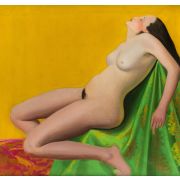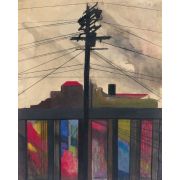
Futurism
Futurism
1 to 1 out of 1artist
Joseph Stella
1880 -1946, American / American Modernism and Futurism, 290 works
1 to 1 out of 1artist
Futurism was an artistic and social movement in early 20th-century Italy. It stressed speed, technology, youth, violence, and items like vehicles, airplanes, and industrial metropolia. Parallel activities occurred in Russia, England, Belgium, and others. Futurists practiced painting, sculpture, pottery, graphic design, industrial design, interior design, urban design, theatre, cinema, fashion, textiles, literature, music, architecture, and Futurist meals. Italians Filippo Tommaso Marinetti, Umberto Boccioni, Carlo Carrà, Gino Severini, Giacomo Balla, Antonio Sant'Elia, Bruno Munari, Benedetta Cappa, and Luigi Russolo, Russians Natalia Goncharova, Velimir Khlebnikov, Igor Severyanin, David Burliuk, Aleksei Kruchenykh and Vladimir Mayakovsky, Belgian Ju It praised modernity and freed Italy from its history. Cubism influenced Italian Futurism. Marinetti's Manifesto of Futurism, Boccioni's Unique Forms of Continuity in Space, and Balla's Abstract Speed + Sound were important Futurist works (pictured). Art Deco, Constructivism, Surrealism, Dada, Precisionism, Rayonism, and Vorticism were inspired by Futurism.
Marinetti created futurism in Milan in 1909. Marinetti's Futurist Manifesto was initially published in La gazzetta dell'Emilia on 5 February 1909 and in Le Figaro on 20 February 1909. Umberto Boccioni, Carlo Carrà, Giacomo Balla, Gino Severini, and Luigi Russolo soon joined him. Marinetti loathed tradition, particularly political and artistic. "We young and powerful Futurists don't want it," he wrote. Futurists adored speed, technology, youth, violence, vehicle, aircraft, and the industrial metropolis. They were genuine patriots. They rejected the past and imitation, applauded originality, "however bold, however violent," wore "the stain of crazy," disregarded art critics as worthless, revolted against harmony and good taste, and gloried science.
Futurists (headed by Marinetti) published manifestos on art, architecture, religion, dress, and food.
Futurists tried to construct an excellent creative agenda in their Technical Manifesto of Futurist Painting (1914). This obliged them to paint "universal dynamism." Objects aren't independent of each other or their environment. "In a moving bus, the 16 people around you are one, ten, four, three; they change places. The bus rushes into the buildings it passes, and the houses mingle with the vehicle."



